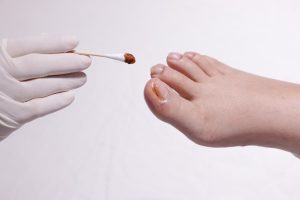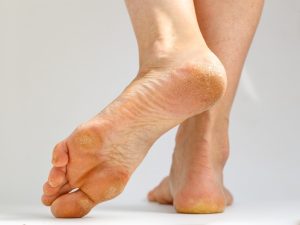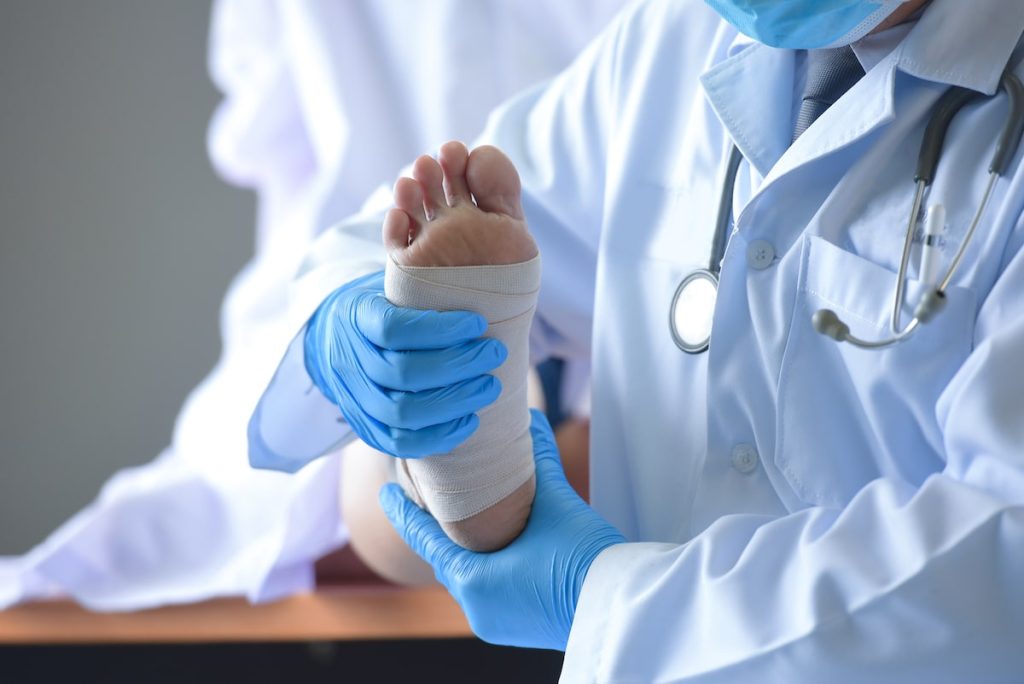Are you tired of suffering from foot pain that just won’t go away? Well, it’s time to put your best foot forward and seek help from a podiatrist. These professional foot and ankle specialists are trained to diagnose foot conditions and treat a variety of foot ailments. In this article, we’ll be exploring six common foot conditions that podiatrists see every day, and discussing their causes, and symptoms.
Common Foot Conditions You Should See A Podiatrist For
A podiatrist is a doctor who specializes in diagnosing and treating feet and ankles. Podiatrists play a crucial role in maintaining foot health, as they are trained to recognize and treat a wide range of foot and ankle problems. Podiatry is a specialized field of medicine that focuses on the diagnosis, treatment, and prevention of conditions related to the feet and ankles. Podiatrists are trained to recognize and treat a wide range of foot and ankle problems. Here are some of the most common foot conditions that are treated in podiatry:
Treating Plantar Fasciitis Is A Specialty Of A Podiatrist
Plantar fasciitis is a condition that affects the plantar fascia, a thick band of tissue that runs along the bottom of the foot from the heel to the toes. It is one of the most common causes of heel pain and is estimated to affect up to 10% of the population at some point in their lifetime.
The plantar fascia is designed to absorb shock and provide support to the foot. When this tissue becomes inflamed or overstretched, it can lead to pain and discomfort in the heel or arch of the foot. Plantar fasciitis is often caused by repetitive strain or overuse of the plantar fascia, but can also be caused by factors such as
- Abnormal foot mechanics, such as flat feet or high arches, which can place extra stress on the plantar fascia.
- Excess weight can increase the pressure on the plantar fascia, leading to inflammation and pain.
- Wearing shoes with poor arch support or inadequate cushioning can increase the risk of developing plantar fasciitis. Plantar fasciitis is more common in individuals over the age of 40.
The Symptoms Of Plantar Fasciitis Typically Include
- Pain and stiffness in the heel or arch of the foot
- Tenderness or swelling in the affected area. and difficulty walking or standing for extended periods of time.
Podiatrists Treat Ingrown Toenails

Ingrown toenails occur when the edge of the nail grows into the skin surrounding the nail, causing pain, swelling, and infection. They are a common condition, affecting people of all ages, but are most commonly seen in adolescents and adults. Several factors can increase the risk of developing ingrown toenails, including:
- Wearing shoes that are too tight or too loose can increase the risk of developing ingrown toenails.
- Trauma to the toe, such as stubbing the toe or dropping something on it, which can lead to ingrown toenails.
- Nails that are naturally curved or have an irregular shape can increase the risk of ingrown toenails.
- Cutting the toenails too short or rounding the edges can cause the nail to grow into the surrounding skin.
The Symptoms Of Ingrown Toenails Typically Include
- Pain and tenderness around the affected toenail.
- Swelling and redness around the affected toenail.
- Infection, characterized by drainage or pus.
It is important to seek professional help if you are experiencing symptoms of an ingrown toenail. Early intervention can help prevent complications and ensure that the condition is properly treated.
You See A Doctor Of Podiatric Medicine For Bunions
A bunion, also known as hallux valgus, is a bony protrusion that forms on the joint at the base of the big toe. It is a common condition that affects people of all ages but is more common in women and older individuals.
Bunions develop when the big toe is pushed out of its normal position and the joint at the base of the toe becomes enlarged and painful. This can be caused by a variety of factors, including
Genetics: Bunions can run in families and may be inherited.
Footwear: Wearing shoes that are too tight or too narrow can force the toes into an unnatural position, leading to the development of bunions.
Foot Structure: People with flat feet or other structural abnormalities may be more prone to developing bunions.
Arthritis: Arthritis can cause damage to the joint at the base of the big toe, leading to the development of bunions.
The Symptoms Of Bunions Typically Include;
- Pain and tenderness at the base of the big toe,
- Swelling, and redness around the affected joint.
- Limited range of motion in the affected toe.
- Corns or calluses on the affected toe.
Corns And Calluses Are Common Conditions In Podiatry

Corns and calluses are thickened areas of skin that develop on the feet in response to friction and pressure. They are a common condition, affecting people of all ages, but are more common in individuals who wear ill-fitting shoes or who engage in activities that put repeated pressure on the feet.
Corns are small, circular areas of thickened skin that typically develop on the tops and sides of the toes. They can be painful and may have a central core of hardened skin. Calluses are larger, flatter areas of thickened skin that develop on the soles of the feet or the heels. They are generally not painful, but can be unsightly and may crack or split.
The Main Causes Of Corns And Calluses Are:
- Shoes that are too tight or too loose can cause friction and pressure on the feet, leading to the development of corns and calluses.
- People with certain foot structures, such as high arches or flat feet, may be more prone to developing corns and calluses.
- Activities that involve repetitive pressure on the feet, such as running or dancing, can lead to the development of corns and calluses.
Visit A Podiatrist For Athlete’s Foot
An athlete’s foot, also known as tinea pedis, is a common fungal infection that affects the skin on the feet. It is caused by a group of fungi called dermatophytes that thrive in warm and moist environments, such as locker rooms, public showers, and swimming pools. The condition is characterized by red, itchy, and scaly patches of skin, typically between the toes but can also occur on the soles and sides of the feet.
Athlete’s foot can be transmitted through direct contact with an infected person or by touching contaminated surfaces, such as floors, towels, or shoes. People who have sweaty feet or who wear tight-fitting shoes are more susceptible to the condition. Athletes’ foot is not limited to athletes; anyone can get them.
Symptoms Of Athlete’s Foot Can Vary In Severity.
- Mild cases may only cause dryness, flakiness, and itching, while
- More severe cases can result in blistering, cracking, and oozing of the skin.
- In some cases, the infection can spread to the toenails, causing them to become thickened, discolored, and brittle.
Heel Spurs Condition Is Treated By A Board-Certified Podiatrist
Heel spurs are bony growths on the heel bone, also known as the calcaneus. They are usually associated with a condition called plantar fasciitis, which is an inflammation of the plantar fascia, a thick band of tissue that runs across the bottom of the foot and connects the heel bone to the toes.
Heel spurs are often the result of long-term strain on the foot, such as repeated impacts from running or jumping, or from wearing shoes that do not fit properly or lack sufficient arch support. Other factors that can contribute to the formation of heel spurs include obesity, age-related wear and tear, and underlying medical conditions such as arthritis.
Symptoms Of Heel Spurs May Include
- Pain and tenderness in the heel, especially when walking, running, or standing for long periods of time.
- In some cases, the pain may be more severe in the morning or after sitting for an extended period and then getting up.
- Heel spurs can also cause inflammation of the surrounding tissue, leading to swelling and redness.
In conclusion, If you are experiencing foot pain or discomfort, seeking professional help from a podiatric physician is crucial to prevent further damage and maintain your foot health. Foot pain is not normal and ignoring it can lead to more serious problems down the road. If you experience persistent pain, swelling, or discomfort in your feet, seek medical attention right away.
A podiatrist is a doctor who focuses on diagnosing and treating foot and ankle problems, and they are the best healthcare provider to seek out for foot-related concerns. When you visit your healthcare provider, be honest and open about your symptoms and concerns. Your healthcare provider will need to know your medical history and any relevant information to make an accurate diagnosis and provide the appropriate treatment.

